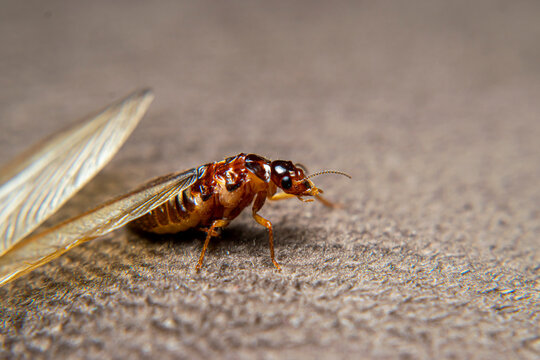Introduction:
Nature, with its intricate tapestry of life, never fails to amaze us with its wonders. One such fascinating phenomenon is the transformation of baby termites with wings. These tiny insects undergo a remarkable journey of metamorphosis, showcasing the marvels of evolution and adaptation in the insect world. Baby termites with wings, known as alates, undergo a fascinating metamorphosis as they transition from wingless nymphs to delicate-winged adults, embarking on a nuptial flight to establish new colonies
The Lifecycle of Termites:
Before delving into the transformation, let’s briefly understand the lifecycle of termites. Termites, often mistaken for ants, belong to the order Isoptera. Their lifecycle consists of distinct stages: egg, nymph, and adult. However, it is the transformation from nymph to adult that captivates the imagination, especially when it comes to those termites that develop wings.
Nymphs and the Development of Wings:
Baby termites, also known as nymphs, hatch from eggs laid by the queen termite. Initially, they are pale, soft-bodied, and wingless. As they progress through the nymphal stages, undergoing molts, they gradually acquire their characteristic features.
The transformation takes a remarkable turn when certain nymphs develop into alates, also known as reproductive adults. These are the baby termites that will eventually become kings and queens of new termite colonies. What makes this process even more fascinating is the development of wings during this stage.
The Emergence of Wings:
As the alates mature, they grow two pairs of delicate wings, a distinctive feature that sets them apart from the worker and soldier termites. These wings are not just for show; they serve a crucial purpose in the termite reproductive cycle.
The winged baby termites, now ready to embark on their nuptial flight, prepare to leave the colony. This synchronized emergence of winged termites often occurs in large numbers, creating a spectacular natural event. The nuptial flight is a crucial phase in the termite lifecycle as it marks the beginning of the process of establishing new colonies.
The Nuptial Flight:
The nuptial flight is a spectacle that showcases the resilience and adaptability of termites. Winged termites take to the air in search of a mate to start a new colony. This event usually happens during specific environmental conditions, often triggered by factors such as temperature, humidity, and time of day.
During the flight, the winged termites, often referred to as swarmers, shed their wings. This shedding is a symbolic act, representing the transition from the mobile phase to the settling phase. Once they find a suitable mate, they land, shed their wings, and pair up to establish a new colony. The surviving pair becomes the king and queen of the colony, laying the groundwork for a new termite community.
Conclusion:
The transformation of baby termites with wings is a captivating journey that highlights the resilience, adaptability, and complexity of nature. From humble, wingless nymphs to winged alates embarking on a nuptial flight, these tiny insects play a crucial role in maintaining ecological balance. The next time you encounter a swarm of winged termites, take a moment to appreciate the incredible journey and transformation these creatures undergo, contributing to the perpetual cycle of life in the insect world.

